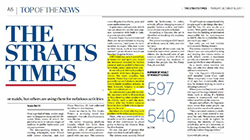Man Down System by Industry (A10005)
 A lone worker is someone who works alone without any close or direct supervision. Therefore, without any direct assistant many times they face any injury which can take a life of lone worker if immediate help is not provided. The safety of the lone workers is very important in the sectors like Agriculture, Mining, Construction, Manufacturing, Electric, oil and gas, Sanitary Service, Finance and Insurance, and Real Estate Services. Each sector has its own risks associated with the lone workers. That’s why it’s really important to understand the different risk associated with each sector and what are the solutions that each sector use to cope up with these issues.
A lone worker is someone who works alone without any close or direct supervision. Therefore, without any direct assistant many times they face any injury which can take a life of lone worker if immediate help is not provided. The safety of the lone workers is very important in the sectors like Agriculture, Mining, Construction, Manufacturing, Electric, oil and gas, Sanitary Service, Finance and Insurance, and Real Estate Services. Each sector has its own risks associated with the lone workers. That’s why it’s really important to understand the different risk associated with each sector and what are the solutions that each sector use to cope up with these issues.
Every industry is responsible under the law to provide safety and security to the lone workers. Here in this article, we will talk about the most common risk that these industry lone workers face and what can management do to mitigate these potential risks.
Agriculture:
If we see in agriculture there are large farms and many employees, however, most of the time people work alone in remote areas. Due to involvement with heavy machinery, large animals and working with the hands increase the risk of injury. In UK agriculture fatal injury rate is 18 times higher than others. Therefore, it creates an alarming situation in the agriculture sector throughout the globe to take measures which will help to reduce the accidents related to lone workers employed in agriculture.
Management can reduce the risk by conducting regular training in which they can tell them how to use heavy machinery, Handel large animals and to use gloves while using working with hands. Similarly, for risk assessment, they can use PET analysis which includes what is risk associated with people, environment, and task through this they can assess the key risk of each activity done by the lone worker. Apart from that in this technological era management can introduce new vehicles and equipment which can reduce the potential risk associated with the traditional methods and equipment. Lastly, management can define safe driving roots by lone workers which may help them in remote areas.
Mining:
The mining industry is one of the riskiest industries in the world. Where the death ratio of employees and staff is high. Chinese government statistics indicate that 5000 Chinese miners die in accidents annually. Mining incidents continue worldwide, including accidents causing dozens of fatalities at a time such as the 2007 Ulyanovsk mine disaster in Russia. The above brief statistics show that safety has long been a concern in the mining industry. The individual suffers a lot in sub-surface (underground mining) than surface mining. individual works face many hazards while working such as coal dust inhalation which causes them difficulty while breathing, lung diseases, scarring of lung tissues, which can cause ongoing respiratory issues. and causes many health problems, other hazards they face such as noise of machines, exposures which affect their hearing abilities, overexposure to excessive noise can result in tinnitus (ringing in the ears), sleep disturbance, concentration problems even sometimes permanent hearing loss and chemical gases, surface temperature, limited oxygen flow. Another major hazard is whole-body vibration (wbv) is a slow forming physical hazard that mostly occurs in mining workers that work with heavy machinery. The risk of overexposure of ultraviolet radiation in sunlight is essential. overexposure to UV can cause skin cancer.
The management should introduce a dust control plan and supervisor, or top management should ensure that the dust control system working properly or not. we should train them on how to manage overexposure of coal dust. What precautions taken at the time of overexposure of coal dust. Repository protection should be used when dust control protection is being installed, maintained or repaired. Medical screening and surveillance are also essential. To protect their workers against noise, the steps management must take that first they evaluate work condition noise exposure through risk assessment. They can use vibration dampeners and absorptive panels to control vibration occurs in the working environment. Regular maintenance and assessment of heavy machines are also important to reduce noise hazards. employees should use noise protection tools which help them to reduce noise hazards. For whole-body vibration hazard management should reduce the working schedule of employees, management should design flexible working schedules for employees, proper instruction and training are very critical for this job, regular health checkups and close monitoring of back pain can reduce this dangerous hazard.
Management should conduct a risk assessment on an outdoor work schedule to assist in developing appropriate sun protection measures.
The most effective way of reducing the UV exposure is to use a combination of protection method, we cannot rely on simple method, we should use a combination of protection method such as including re-organizing work to avoid the UV peak of the day, provide natural or artificial shade-providing appropriate protective clothing, and applying sunscreen.
Manufacturing Sector:
The manufacturing sector engages in the transformation of raw materials into goods. The manufacturing sector includes pharmaceuticals, food, vehicle, textile, and other related businesses. Like other sectors here in the manufacturing sector there are various fields where they need lone workers i.e. maintenance and repair. When an employee is out of sight there the risk associated with lone workers increases. Heavy machinery is the major cause related to injuries in the manufacturing sector, on the other hand, lone workers are unable to communicate to get help in a dangerous situation.
Management can identify all the lone workers in the manufacturing sector and then do risk assessment related to each lone worker job. After doing risk assessment they can develop a policy regarding the safety of lone workers. Apart from that employees can carry alarm with them when they are going for a task which is in remote areas. Similarly, they can be more careful while using the equipment. Organizations can also provide them Personal protection equipment which will surely reduce the risk related to lone workers.
Oil and gas industry
If we see globally oil and gas prices are lower than ever before therefore organization budgets are limited, however, we cannot compromise on the safety of lone workers. Majority oil and gas extraction sites are in remote areas where it’s hard to maintain the connection with the lone workers.so there is out of sight and out of touch problem in the oil and gas sector which gives birth to so many risks. The most common risk associated with the lone workers in the oil and gas industry is slips and falls, falling objects, cuts and burns and continuous exposure to gases. The risk can turn into a dangerous situation in which immediate response is needed.
The solution for the oil and gas industry is to use new modern tools like the ihelp-man down system which is the world’s smallest 3G GPS tracking system. A lone worker can press the button when he is feeling any danger or automatic message will be sent with location when he is falling due to any situation. Other measures can be to use protection tools like masks, hand gloves and other tools to make sure physical safety.
Electricity sector:
This sector has the most risk when it comes to lone workers, it’s because these people have direct exposure to the electricity and the typical job of lone workers in this field is more than one hour so in this duration any mishap can happen which can lead towards worst consequences. There is also a risk of death if something happened and immediate measures are not taken. Other hazards they can face that sometimes they get electric shocks while working on the towers, in high places due to this they can fall on the ground and get serious injuries.
Therefore, the organization has those lone workers who are highly trained. Whereas they should have the contingency plan what lone worker should do if he comes across a dangerous situation. They should also work in the pair. They can use proper safety belts while performing the job on high sites or they can use the man-down system which will helps management to get fast alert when a lone worker falls down on the surface from top sites.
Construction:
The construction industry is among the industries which are growing fast due to an increase in population and urbanization in the whole world. construction industry includes the construction of buildings, roads, houses, hospitals, workplaces, shopping malls, etc. But hazards lone worker faces when he is working on the height, the noise coming from tools, the heavy machine is higher than other construction works. The critical and major hazards lone worker face on sites are, falls and slips, being caught between objects, falling from top of the object, unstable working surface, slips or falls from ladder of stairways, electric shock, head injury, falling from heavy machines such cranes, while loading and unloading heavy machine from one object to another, improper training & supervision. sometimes lone workers are working in remote areas so due to not effective communication they unable to interact with their team.
For reducing these hazards management should integrate safety as a part of planning, firstly they should provide proper coaching and training to foreman and supervisors then they will guide their lone workers who work individually on remote areas without any assistance from the top tier of management. They must introduce a fall protection system & head protection to reduced serious deaths and injuries during the job. For lone worker management must provide them safety training and show them the demo of how-to proper use tools and machines. Foreman or supervisor should do site assessment before starting work. Proper safety inspection and inspect tools & equipment regularly.
Lone workers who are working in remote areas should provide proper display signs, so they don’t feel any hurdles while working. For effective communication, management can use a wireless phone or any electronic device. They can also use robots for different jobs to reduce lone work injuries and deaths ratio.
Finance and Insurance Sector:
Unlike other sectors in the finance and insurance sector, the lone worker ratio is high than in other industries. In the banking and insurance sector mostly, lone workers are sales representatives & business development officers. Those who are working outside of the bank try to reach customers for different purposes. Like the person who goes for the collection of loan or insurance amount, because they carry so much money there are chances few evil minds people can harm lone workers which may cost financial losses and also is a potential threat to lone workers. Lone workers in the finance and insurance sector can suffer from heatstroke, dehydration problems in hot weather.
So, the management can go for GPS tracking devices which will help management to trace the lone workers. For making their lone worker life easy company can provide them vehicles designed in such a way that protects them from the sun in hot weather. Re-organizing work to avoid health-related hazards, provide natural and artificial shades and applying sunscreen.
Real estate industry:
The nature of the real estate industry is in which agents work alone; in which agents go with buyers or sellers of properties, you don’t know what you find behind the door and there are chances they can harm him physically. Apart from that the agents most of the time carry huge money which can create a problem when someone gets a clue about the amount. In the real estate industry, the lone worker mostly hasn’t proper information about market location, rates, demand and value of bungalows, flats and commercial areas. Lone worker job in the real estate industry is mostly to visit fields so a lone worker can suffer from many health hazards in hot weather.
Therefore, like other sectors measures like GPS tracking, drive though safe roots, always carry protection tool with you. Apart from that do not share your personal information with the clients and try to meet with your clients in public. Management must provide proper information about market, value, and rates of different sites so lone worker never hesitates while presenting to the clients and deliver a presentation with real facts and figures. For lone worker management should provide safety measures such as applying sunscreen, protect lone workers through natural or artificial shades or making some changes in schedule so the lone workers can protect themselves from hot weather.
Sanitary services:
A service in which workers job is to empty people’s dustbin and take the rubbish away for recycling or disposed of. The sanitary worker’s duty to check the draining system & remove all the blockages, cross bores or damages. lone worker can face hazards such as exposure of harmful gases; methane, Hydrogen sulfide. Lone workers affected by many infections while working such as hepatitis, skin problems. Cuts, scratches, penetrating wounds are the regular hazards that they are facing horribly. The lone worker hazards increase when they do work underground in different pipelines, they are facing problems such as breathing, hydrogen, lack of light, limited resources. The main hazards are that they get injured from different insects during the work. They don’t wash hand properly after performing their duty due to lack of awareness and knowledge
The management should take medical measures on regular bases to detect any health disorder or problem in lone workers. Lone workers must provide proper dress, gloves, and shoes so they can save themselves from cuts, scratches and penetrating wounds. Provide them proper masks and torches to perform their work properly. Proper awareness and education must be given to lone workers. Teach them how to clean hands after doing jobs so they can keep safe themselves from different health diseases.
In this article we briefly talk about the major sectors that are affected by the lone worker’s issues, therefore, we have suggested the solution of each sector. By implementing the above solutions and integrate these solutions as a part of planning, management can reduce these hazards and increase the performance and output of their lone workers. The success of an organization is totally depending upon the performance of employees especially lone workers; if the organization facilitated their lone workers then they can achieve their targets and desired goals.










